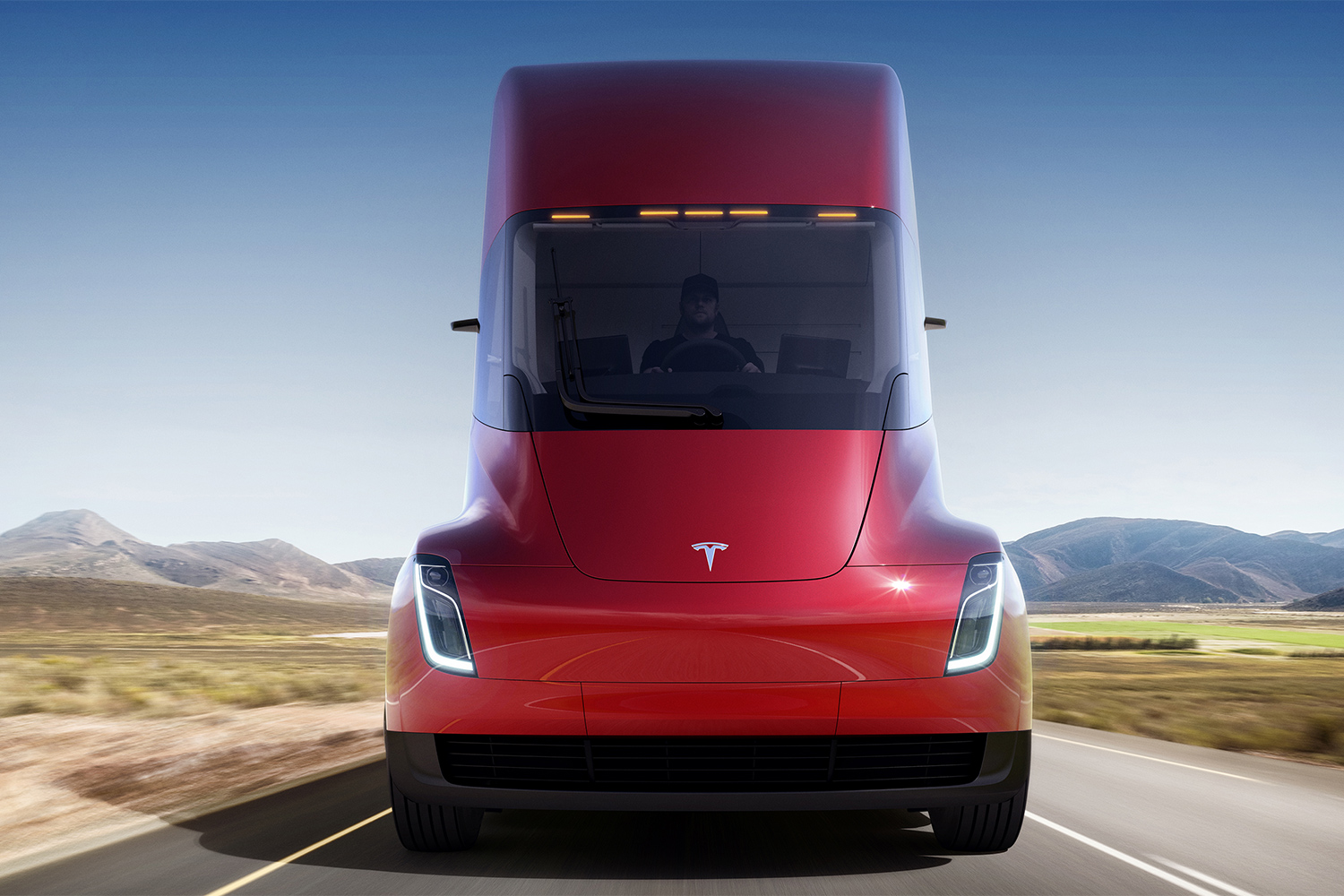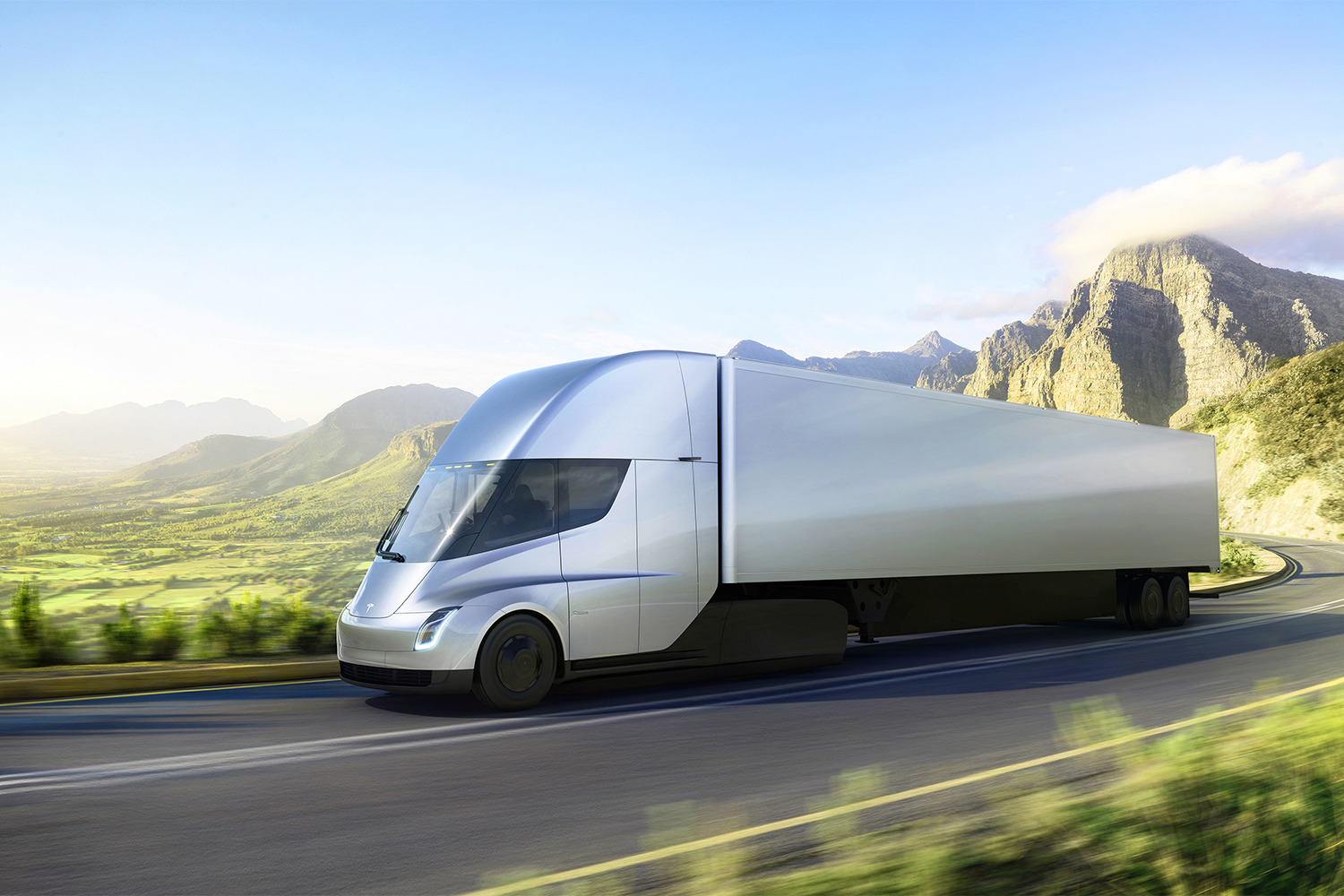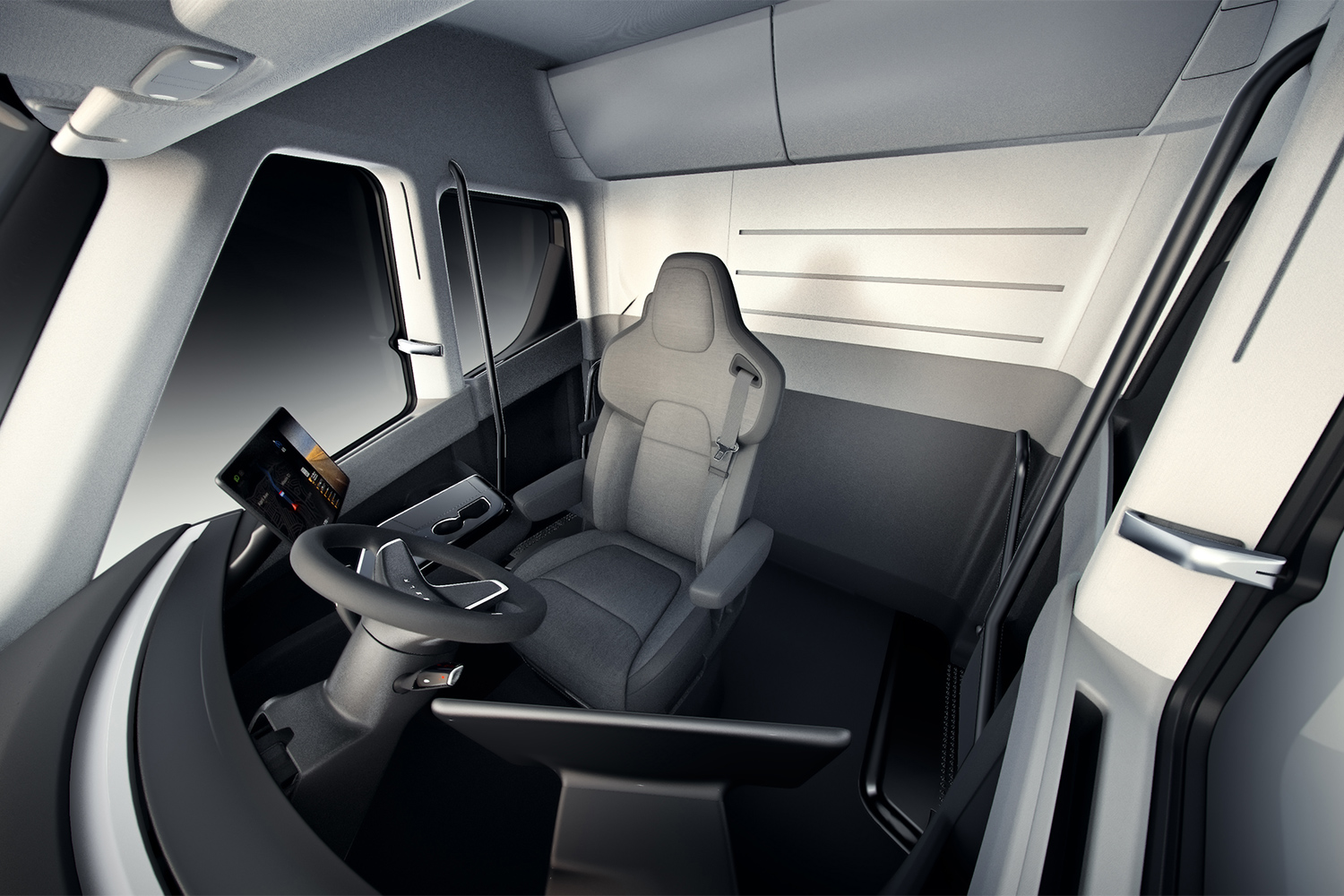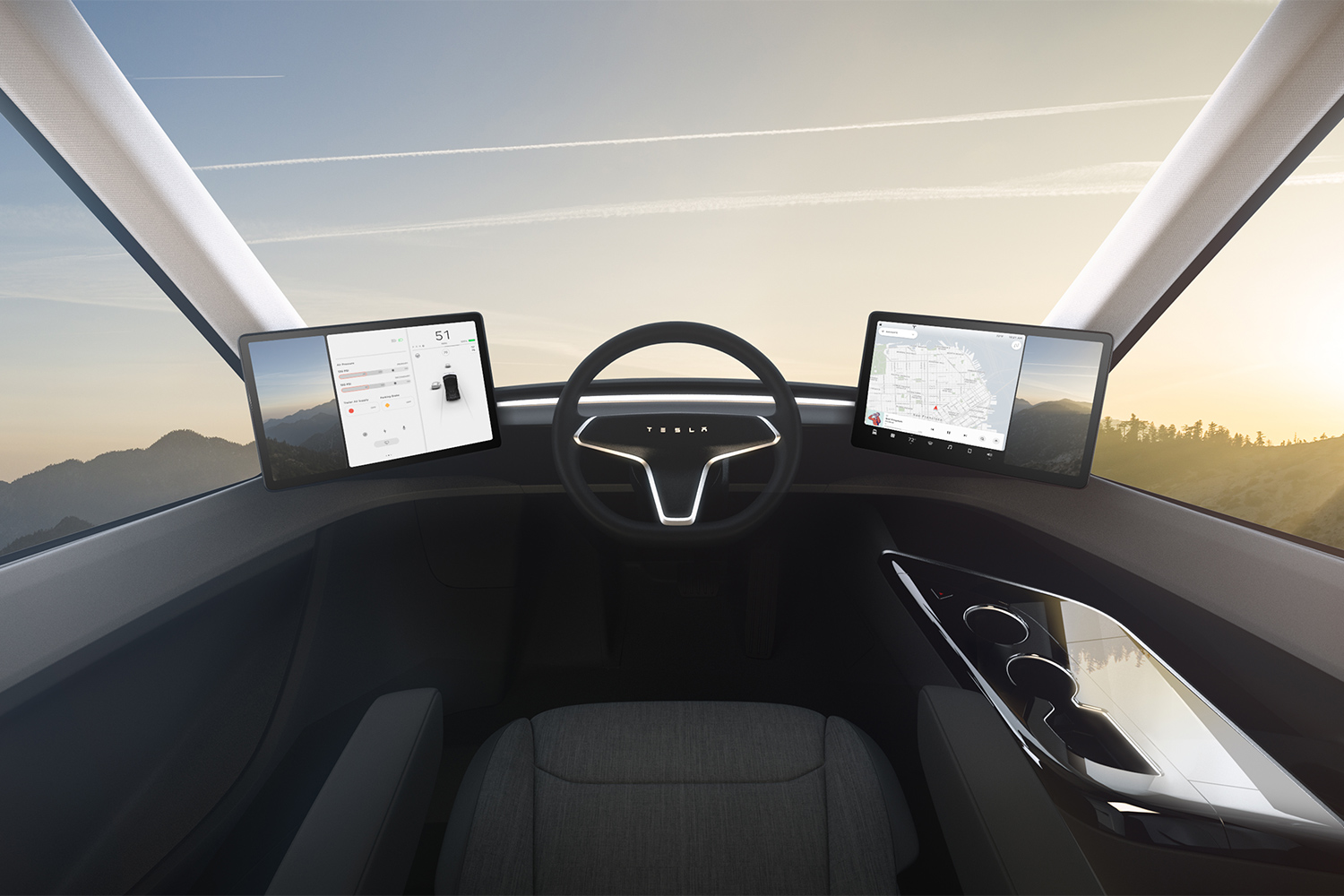Tesla has remained relatively quiet about its Semi since it introduced the truck in November 2017. It received about 2,000 pre-orders from a wide variety of clients around the globe, including Walmart and Anheuser-Busch, but some analysts cautiously speculated the company’s silence signaled it had moved the Semi project to the back burner. Proving the naysayers wrong, Tesla posted a video showing one of its Semi prototypes hauling a load of new cars on a freeway in California.
Putting the Semi to work makes sense for the Silicon Valley-based automaker. On the one hand, using its own trucks helps the company save money as it attempts to increase deliveries. On the other hand, it also allows Tesla’s research and development department to gather data about how the Semi handles real-world situations. Delivery drivers will likely have less patience than Model 3 owners when it comes to quality issues.
The video confirms the Semi’s design hasn’t changed since its unveiling; it’s still unlike anything we’ve seen before. Its specifications sheet is impressive, too.
Tesla Semi out for deliveries
— Tesla (@Tesla) April 1, 2019
When loaded to its 80,000-pound maximum gross vehicle weight, the Semi is able to accelerate from zero to 60 mph in 20 seconds. When it comes to hauling freight up five-percent grades, the Tesla can manage 65 mph. And while it won’t win the range battle — it can drive for up to 300 or 500 miles depending on configuration — its battery pack stores enough electricity for short delivery operations. According to Tesla, 80 percent of freight routes are shorter than 250 miles, and the plug-in rig can replenish 400 miles of range in just 30 minutes while it loads or unloads.
The engineers in charge of developing the Semi are putting a big focus on safety. It comes standard with automatic emergency braking, lane-keeping assist, and forward collision warning, and its infotainment system can seamlessly integrate into fleet systems. Even the powertrain adds safety, according to Tesla. The floor-mounted batteries reduce the center of gravity, which decreases the chance of a rollover. And each wheel gets its own independent motor, so torque is distributed to each hub independently, so that the risk of jackknifing drops.
Tesla’s Semi will be capable of platooning. What is platooning? Much like penguins in the Antarctic, platooning involves groups of vehicles huddling together on the freeway, but instead of sharing warmth, they link their safety systems together to follow each other very closely. Not only is this more efficient from an aerodynamics standpoint, when the computers handle the driving, it’s 10 times safer than when a human does it.
Pricing for the 300-mile model starts at $150,000, and truckers can unlock up to 500 miles of driving range by spending $180,000. Buyers will need to include a $20,000 deposit with each reservation. To add context, the average cost of a diesel-powered semi hovers around $120,000. While Tesla’s truck is considerably more expensive, the company predicts owners will save $200,000 by the time they reach the million-mile mark.
In 2017, Tesla announced it planned to start Semi deliveries in 2019. The company hasn’t provided a more specific time frame, and it has an impressive history of delaying products. We’re expecting to learn more details (such as the size of the Semi’s battery pack, and where it will be built) in the coming months.
Who else wants a piece of the pie?
Tesla isn’t the only player in the electric semi arena. Heavy equipment manufacturer Cummins revealed the Aeos, an 18,000-pound, class-seven urban hauler powered by a 140-kWh battery pack. Nikola Motors is also developing a zero-emission semi called the Nikola One, which combines hydrogen fuel cells with batteries. Mercedes-Benz and Freightliner parent company Daimler are also planning on entering the segment with the eCascadia, which Digital Trends drove in Las Vegas.
Updated on April 1, 2019: Added the latest information about the Tesla Semi.







